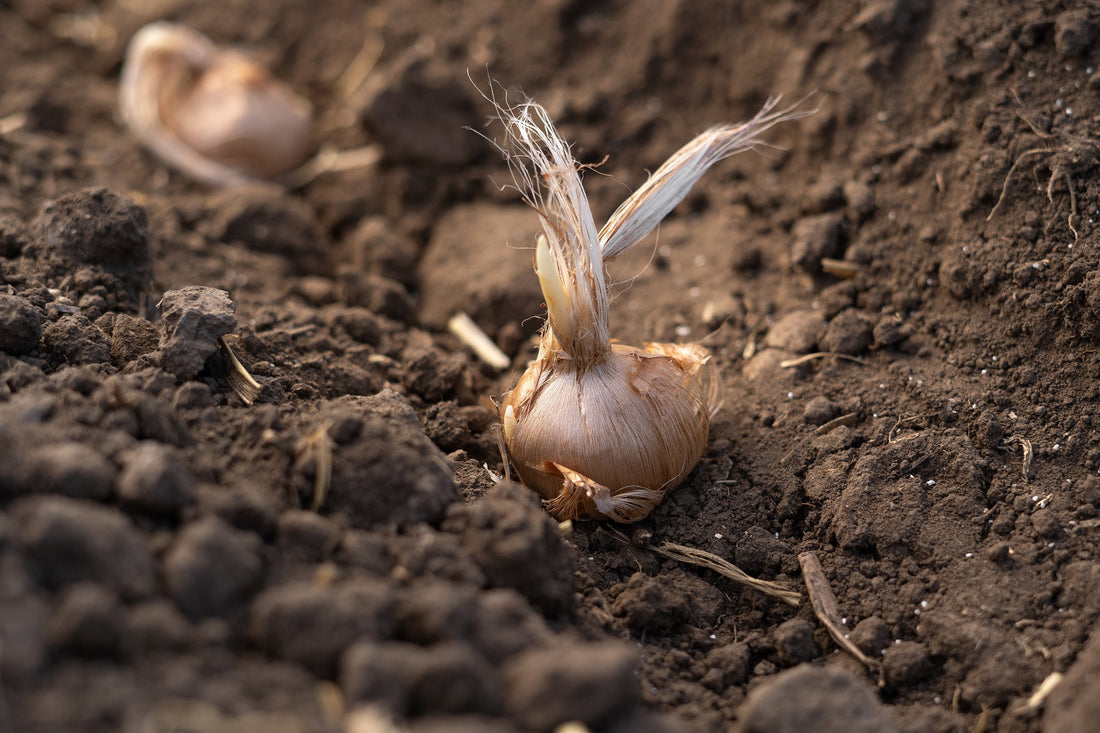
How to prepare your soil for saffron bulbs
Share
When you choose Roco Saffron bulbs, you’re already starting with the best genetics. But to unlock the full potential of your Crocus sativus crop, what happens underground matters just as much as what blooms above it.
Proper soil preparation and fertility management are key to ensuring your bulbs thrive, multiply, and produce high-quality saffron threads year after year.
In this guide, we’ll cover:
- Ideal soil types for saffron cultivation;
- Soil preparation before planting;
- Fertility management and organic amendments;
- Common mistakes to avoid.
The best soil for saffron: light, loose, and well-drained
Saffron bulbs (corms) are highly sensitive to excess moisture and poor aeration. That’s why they perform best in:
- Sandy-loam or loamy soils;
- pH between 6.0 and 8.0;
- Soil with good structure and minimal compaction;
- Areas with excellent drainage (raised beds are ideal).
Heavy clay soils or compacted ground will retain too much water, increasing the risk of corm rot and fungal diseases. If your soil tends toward clay, don’t worry—there are ways to improve it.
How to prepare your soil before planting
Whether you’re planting a small patch or multiple hectares, here’s how to prepare the land for your Crocus sativus bulbs:
1. Clear the area: Remove weeds, old roots, and debris. These compete for nutrients and may harbor pests or diseases;
2. Test your soil: A soil test will help determine pH, organic matter, and nutrient content. This lets you make accurate amendment decisions;
3. Improve drainage: If needed, mix in coarse sand, compost, or aged manure to loosen compacted soil. For poor-draining fields, raised beds or gentle slopes are highly recommended;
4. Deep tilling (optional): Tilling or double-digging can help break up hard layers and allow corms to root more freely. Always avoid over-tilling, which can disturb soil structure.
Fertility management for saffron fields
Saffron is a hardy crop but moderate fertility is key to long-term productivity—especially if you're planting for multiple years.
Base fertility guidelines:
- Apply well-rotted organic compost before planting;
- Incorporate low-nitrogen, phosphorus-rich fertilizers (e.g., bone meal, rock phosphate);
- Avoid excess nitrogen, which promotes leaf growth but reduces flowering.
Seasonal fertility tips:
- In winter/spring (vegetative stage), a light top dressing of potassium can support corm development;
- Replenish organic matter annually to support microbial life and root health;
- Mulching with straw or shredded leaves in winter can help regulate soil moisture and temperature.
At Roco Saffron, we’re happy to advise on a fertility plan tailored to your soil test and planting scale.
Common soil mistakes to avoid
Even experienced growers can run into problems. Here are a few things to watch out for:
- Overwatering or poor drainage – the #1 cause of rot;
- Over-fertilizing – especially with nitrogen, which can reduce yield;
- Planting in unamended clay – slows growth and encourages disease;
- Ignoring soil testing – leads to guesswork instead of informed management.
Why It Starts With Roco Saffron Bulbs
High-quality Crocus sativus bulbs are the foundation of a productive saffron crop. At Roco Saffron, our bulbs are:
- Grown in healthy, balanced soils;
- Clean, disease-free, and ready for international planting;
- Backed by expert advice from growers who understand real-world conditions;
- Shipped with care and phytosanitary certification worldwide.
We want your saffron field to thrive, which is why we don’t just sell bulbs—we share everything we’ve learned from years of successful cultivation.
Soil preparation is not just the first step—it’s one of the most important steps in saffron farming. By combining premium bulbs from Roco Saffron with thoughtful soil management, you’re giving your crop the best chance at a healthy, high-yield future.
Need help with your soil setup or a custom quote for bulbs? Contact us—we’re happy to help, whether you’re planting 10,000 or 1 million Crocus sativus bulbs.
